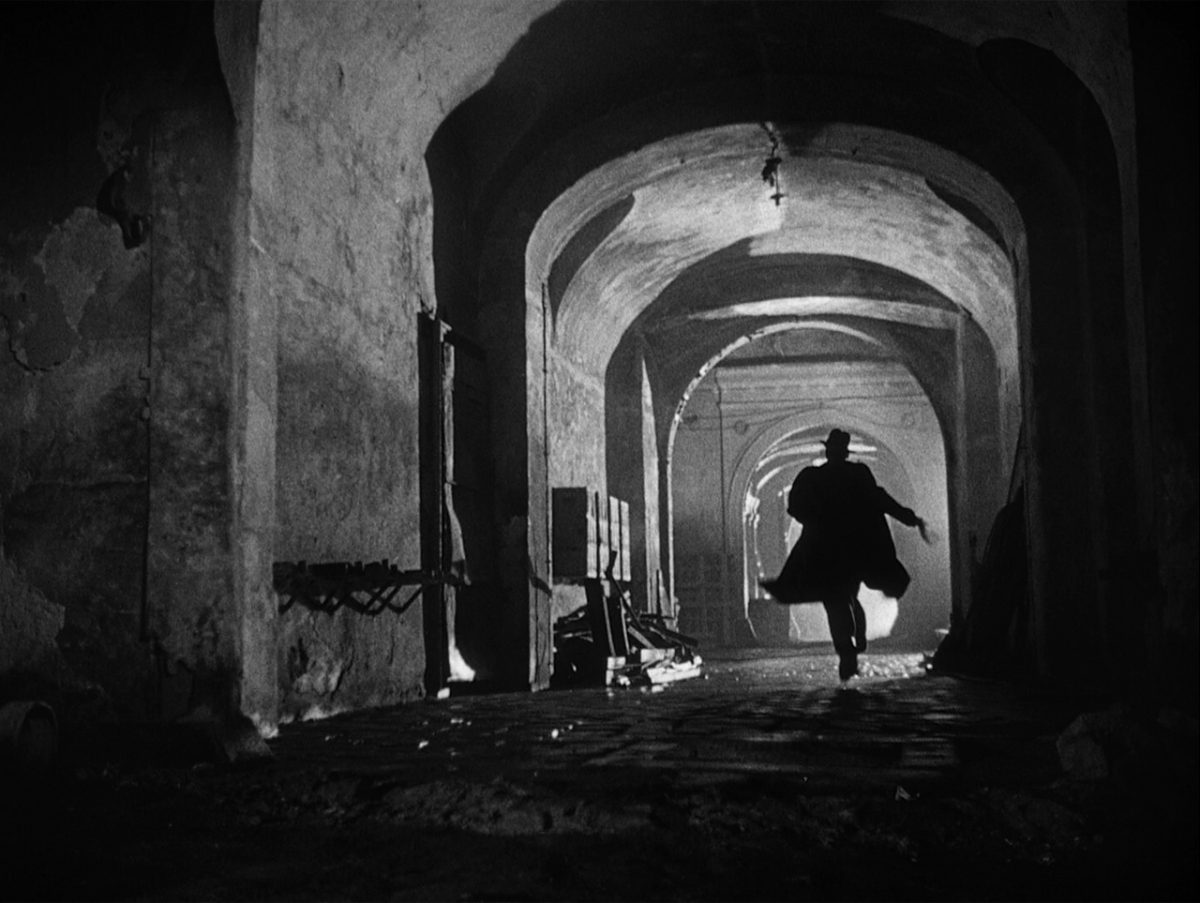The Third Man

Carol Reed
UK – 1949

Screenplay: Graham Greene
Cinematography: Robert Krasker
Production: London Film Productions
Language: English, German, Russian
Duration: 105 min
Color: Black and White
Synopsis: An out of work pulp fiction novelist, Holly Martins, arrives in a post war Vienna to start a new job at the invitation of Harry Lime, an old friend from school. The city is divided into sectors by the victorious allies, but a shortage of supplies and a flourishing black market have turned it into a lawless pit of crime and sin. Upon arrival, Holly learns that Harry has just been killed in a peculiar traffic accident, just outside his home. At the funeral, Holly meets Harry’s beautiful girlfriend Anna Schmidt. Maj. Calloway, in charge of the investigation, offers Holly a ticket back to the States, but while waiting to return home he talks to his late friend’s associates and soon notices that their accounts are inconsistent: were there two men at the site of the accident or were there three? Determined to discover what really happened, Holly learns that Harry Lime was responsible for a series of thefts from a military hospital, after which the stolen drugs were diluted and sold on the black market, causing a number of deaths and infant abnormalities. Dismayed, he continues to investigate and to track down the mysterious third man.
Notes:
Film noir serves as a fascinating thematic testimony to a concern with corrupt city life, post-war disruption, uncontrolled monetary and sexual desire, and sudden moments of violence. This is the other side to stories we tell ourselves of peaceful prosperity, the usually unacknowledged, problematic, negative aspects to individualism and urbanism. The late 1940s were a key moment in the advent of globalizing commodity culture. In The Third Man Harry Lime trades in a traditional wartime commodity, the stolen good. Holly Martins, Harry’s old frat-boyfriend peddles a different kind of commodity: myths of the US frontier via pulp novels. According to Toby Miller, the film is, then, in some sense about the post-war growth in commodities that specialize in questions of meaning—the culture industries.
Despite being shot post-war, The Third Man is in many ways typical of British wartime cinema, in its mixture of ‘documentary detail and social purpose’. And unlike its forebears, it was made on location, which added to the claim to realism. As per The 39 Steps, it blends the distortion of canted camera angles and noirish lighting with ‘a quasi-documentary tour of Vienna’. When he wrote The Third Man, Greene was an ex-Communist and ex-spy with very conservative politics. But by the late 1950s, he mocked imperialist spying and turned away from hostility to insurgencies in Kenya and Malaya to anti-imperialist positions on Vietnam, Zaire, Haiti, Pataguay, and South Africa, in a succession of novels through the late 1970s. Greene based The Third Man’s anti-hero excapades below ground on stories of Kim Philby’s use of sewage tunnels to rescue communists from the fascists during the 1930s. Some critics have charged him with faux authenticity, but Greene’s past was sufficiently close to ground to guarantee a high degree of historical fact in spite of how outlandish it may sit with official histories. The idea of a penicillin racket, recalls co-producer Alexander Korda, came from British Intelligence, which knew that the USA used it to extract information from venereal-disease-stricken Soviet soldiers. For rather like Jack Lemmon’s disbelieving father in Missing (1982), who is confronted with the reality of CIA participation in Chilean government terrorism, The Third Man is in part about US innocence of its own duplicity unraveling in the face of the realities of superpower and capitalist conspiracy with Fascism. The film is not strictly spy-fiction. Rather it sets up the implausibility of decency in a hidden economy of war-torn life, and yet the need to deal with public health outside of politics. It shows how close business is to government in the detritus of war, and how the Cold War can be understood, at its opening moments, as an infinitely more complex phenomenon than much English-language cinema has allowed itself to reveal.
Notes drawn from Miller, Toby. Spyscreen: Espionage on Film and TV from the 1930s to the 1960s. Oxford University Press, 2003.


